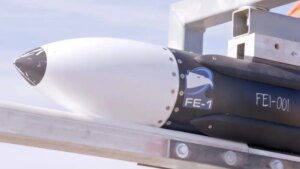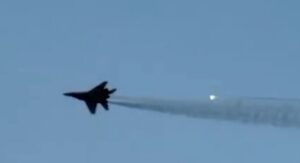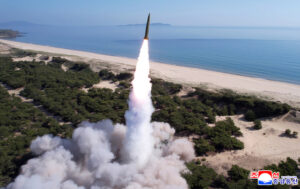美国将在日本部署NMESIS反舰导弹系统应对中国威胁

快速阅读: 2025年,日本和美国将在日本举行大规模联合军演“坚定龙”,约12,000名日本自卫队和1,900名美军参演,重点测试多域作战、两栖攻击和导弹防御能力,首次部署美海军陆战队NMESIS系统,增强岛链防御。
Resolute Dragon 2025 is set to be one of the most expansive iterations of the exercise to date, mobilizing approximately 12,000 personnel from the Japan Self-Defense Forces (JSDF), including elements from the Ground, Maritime, and Air branches, alongside nearly 1,900 US military personnel, primarily from the US Marine Corps. The exercise will feature intensive joint training focused on multi-domain operations, amphibious assault coordination, expeditionary logistics, live-fire drills, and integrated air and missile defense. Notably, combined command-and-control networks will be stress-tested under realistic combat simulations, reinforcing the capability of both nations to operate cohesively in contested littoral environments and island chains.
A key highlight of this year’s exercise is the anticipated deployment and operational testing of the US-developed Navy/Marine Expeditionary Ship Interdiction System (NMESIS) in Japan, specifically at Camp Ishigaki in Okinawa Prefecture. NMESIS represents a new generation of precision-guided coastal defense assets built around the Raytheon Naval Strike Missile (NSM). The system employs a remotely operated Joint Light Tactical Vehicle (JLTV) chassis, designated the Remotely Operated Ground Unit for Expeditionary Fires (ROGUE-Fires), equipped with a twin-box launcher for NSM canisters. NMESIS is capable of operating with minimal personnel exposure thanks to its autonomous command interface and can be networked into a broader sensor-to-shooter kill chain using both US and allied targeting systems.
The NSM itself is a fifth-generation, subsonic, over-the-horizon anti-ship cruise missile with a range exceeding 185 kilometers. Designed for high survivability in dense threat environments, the NSM uses a combination of GPS-aided inertial navigation and terrain-following flight profiles to evade enemy radar and air defense systems. Its imaging infrared (IIR) seeker enables precise terminal targeting and target discrimination, while its programmable flight paths and sea-skimming approach make it especially effective against surface combatants. The warhead features a 125 kg blast-fragmentation payload with programmable fuze settings for surface penetration and optimized damage against ship hulls. NMESIS launchers can be cued by multiple sensors, including UAVs, surface radars, satellites, and multi-domain fusion platforms.
From an operational perspective, the introduction of NMESIS into the Indo-Pacific theater, particularly through a live exercise like Resolute Dragon, marks a pivotal shift in allied deterrence posture. The system enables highly mobile and rapidly deployable anti-ship capability in austere island environments, aligning with the US Marine Corps’ Force Design 2030 initiative and Japan’s new National Defense Strategy. NMESIS allows for distributed maritime operations (DMO) in archipelagic zones, enabling small units to operate autonomously while posing a credible anti-access/area-denial (A2/AD) threat. In concert with Japanese MLRS, coastal radar, and UAV surveillance assets, NMESIS can significantly complicate adversary fleet movements, especially in chokepoints such as the Miyako Strait and Bashi Channel.
Tactically, NMESIS provides flexibility to strike high-value naval targets without reliance on large fixed bases, reducing vulnerability to preemptive strikes. Its networked nature allows for dynamic targeting, shoot-and-scoot capability, and integration into multinational command structures. With sufficient ISR support, NMESIS units can engage in coordinated saturation attacks, ambushes, or serve as a counter-invasion force, effectively turning remote islands into unsinkable missile platforms. Furthermore, its use in the exercise will allow Japan to evaluate potential future adoption or co-development pathways for similar indigenous systems as part of its evolving standoff defense doctrine.
Geopolitically, the deployment and exercise use of NMESIS occur within an increasingly unstable regional environment. Tensions in the East China Sea continue to escalate as the People’s Republic of China intensifies its maritime pressure on Japan’s Senkaku Islands. The Chinese Coast Guard and maritime militia have increased incursions into Japanese-administered waters, often accompanied by PLAN (People’s Liberation Army Navy) destroyers and surveillance platforms. Concurrently, China has modernized its missile and amphibious forces under the Eastern Theater Command, positioning advanced systems such as the YJ-18 anti-ship missile and Type 075 amphibious assault ships within striking distance of the Ryukyu Islands.
China’s assertive posture, coupled with its rejection of international arbitration rulings and increasing naval activity in the first island chain, has raised alarms in Tokyo and Washington. In response, both nations have accelerated joint defense initiatives, pre-positioning munitions, expanding joint operational planning, and improving rapid reinforcement mechanisms for outlying territories. The strategic deployment of NMESIS on islands like Ishigaki not only addresses specific gaps in Japan’s anti-ship strike capability but also serves as a tangible demonstration of alliance readiness and mutual defense commitments under the US-Japan Security Treaty.
However, the planned deployment is not without controversy. Local resistance is expected in Okinawa Prefecture, where residents have long opposed the concentration of US military assets due to concerns over safety, environmental impact, and political autonomy. While defense officials in both nations continue to negotiate the specifics of NMESIS deployment, the broader trend indicates a forward-leaning posture in Japan’s southwest defense line. Resolute Dragon 2025 will be a critical proving ground not only for NMESIS as a weapon system, but also for the broader strategic concept of distributed, networked, and resilient defense across the Indo-Pacific archipelago.
(以上内容均由Ai生成)







